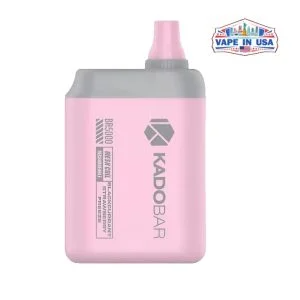The manufacturing sector is undergoing transition due to digitalization, data analysis, and automation. Smart manufacturing — combining intelligent technologies into production capabilities — is the next iteration of the manufacturing sphere. The next iteration is the combination of automation and ERP (enterprise resource planning) software, which is enabling manufacturers to become more efficient, improve decision making, and remain competitive in an ever-changing market.
The Shift Toward Smart Manufacturing
Smart manufacturing is not just about the introduction of new technologies, it’s about developing a connected ecosystem of machines, systems, and humans where the three interact seamlessly. Industry 4.0 has accelerated this shift in smart manufacturing by adding technology like Artificial Intelligence (AI), Internet of Things (IoT), robotics, and machine learning to the manufacturing construct.
Here, automation systems gather real-time data from machines and sensors, and the ERP software makes the information accessible throughout different departments — including procurement, production, and finance. The ability to quickly exchange this data while collaborating, enables manufacturing companies to make quicker decisions, better decisions, run more efficiently, and save on operating costs.
The Role of ERP Software in Manufacturing Automation
Conventional ERP systems provided manufacturers the ability to manage their back-office tasks such as accounting, inventory control, and supply chain management. In light of smart manufacturing, ERP software now goes far beyond its fundamental operations. Modern manufacturing ERP software applications are developing to include automation tools, IoT sensors, and data analysis that provide real-time visibility into each element of the production life cycle.For instance, a current ERP system allows the end user to monitor utilization of raw material, oversee equipment status, and signal requirements for maintenance before a process failure occurs. This preemptive method reduces downtime and helps keep production on schedule.
Advantages of Combining Automation and ERP
The benefits of integrating automation and an ERP system include many advantages beyond efficiency benefits. Here are just a few examples receiving the benefits of integrating:
Real-time Data Transparency
By integrating machines and production lines into the ERP system, manufacturers are able to enable real-time transparency to the operation. Management can view relevant data in a single receiving dashboard on inventory, production, and supply chain performance.
Predictive Maintenance and Downtime Elimination
With an IoT enabled automation system feeding data into the ERP software, the manufacturer will be able to predict with better accuracy if equipment will breakdown or has planned maintenance in the manufacturing process. Predictive data analysis and the use of the ERP system will help reduce unplanned downtimes and reach greater additional fixed cost savings.
Better Quality Control
Automation will obtain data and analyze it at every stage of production. If connected to the ERP, data would provide quality management opportunities to determine quality cantinas, determine abnormalities, and ensure production meets standards external to the production without a final product being tested.
Increased Supply Chain Management
Revenueizing an automation and ERP solution will allow manufacturers to improve their supply change management through automated ordering, supplier performance, and demand forecasting. The scale of synchronicity will support the manufacturer in reducing wastage and improving inventory levels throughout the entire production supply chain. Decision Making Using Data
The integration of automation and ERP provides key decision makers with profoundly analytical insights. Analysis of historical and live data can provide businesses with clues for market forecast, efficient resource allocation and informed decision-making strategically advancing their goals.
Central Considerations of Smart ERP
When manufacturers begin to seriously consider how they want to integrate automation with ERP software there are likely many considerations. Just some of the central ones are:
IoT Connection. Smart factories are highly dependent on IoTs to gather and transmit data from machinery to the ERP system. This connection allows data on the shop floor to be sent to the back-office efficiently,
AI and Machine Learning. An AI ERP system can analyze vast amounts of a factory’s data to outline patterns, rationalize production schedules, and forecast maintenance,
Cloud-Based Framework. Cloud ERP provides support for scaling manufacturing, keeps data accessible, and promotes remote over sight production,
Robotic Process Automation (RPA) RPA allows the automation of monotonous administrative tasks in your ERP system, such as data entry for invoices, and reporting. Hence freeing workers to perform more meaningful work.
The Future of ERP Software Development in Manufacturing
As the manufacturing sector continues towards data-driven organizations, manufacturing ERP software development will have to evolve. The next generation ERP will likely focus on tighter integration with automation tools, interoperability and real time decision-making.
A few trends shaping the future are:
AI powered Predictive Analytics. The next generation ERP systems will use AI not just to respond to issues but to anticipate them, which will allow for autonomous decision-making,
Digital Twins. The integration of ERP and digital twin technology gives manufacturers the opportunity to run simulations of production workflows before implementing changes on the manufacturing floor.
Edge Computing. More and manufacturers will drop cloud processing for IoT data at the edge to reduce latency before it is synced with a cloud vendor,
Sustainability Analytics. Data to be produced by the ERP will contribute to analyzing energy usage, sustainability, waste management, and carbon emissions.
Conclusion
The integration of automation and ERP software is a significant milestone in the trajectory of modern manufacturing. But it’s more than efficiency – it’s enabling the manufacturer to create intelligent, agile, resilient, adaptable production ecosystems to achieve competitive advantage in a rapidly changing market.
Via the smart and strategic manufacturing ERP software development – business realizes the data productivity advances of automation and data analytics, into better decision making, improved product quality and sustainable growth. In the age of smart manufacturing, business that embark with Davis into the future can not only survive, but flourish in the digital first economy.





Leave a Reply